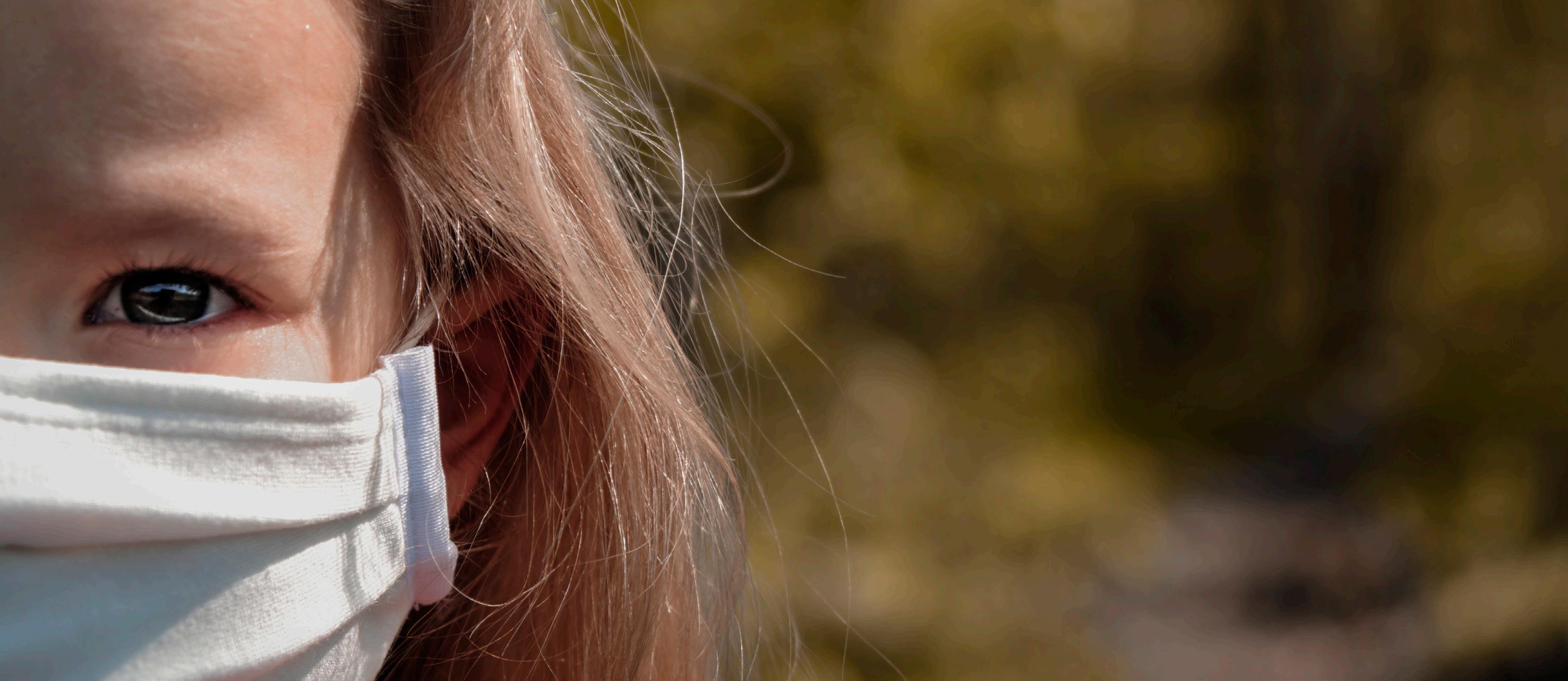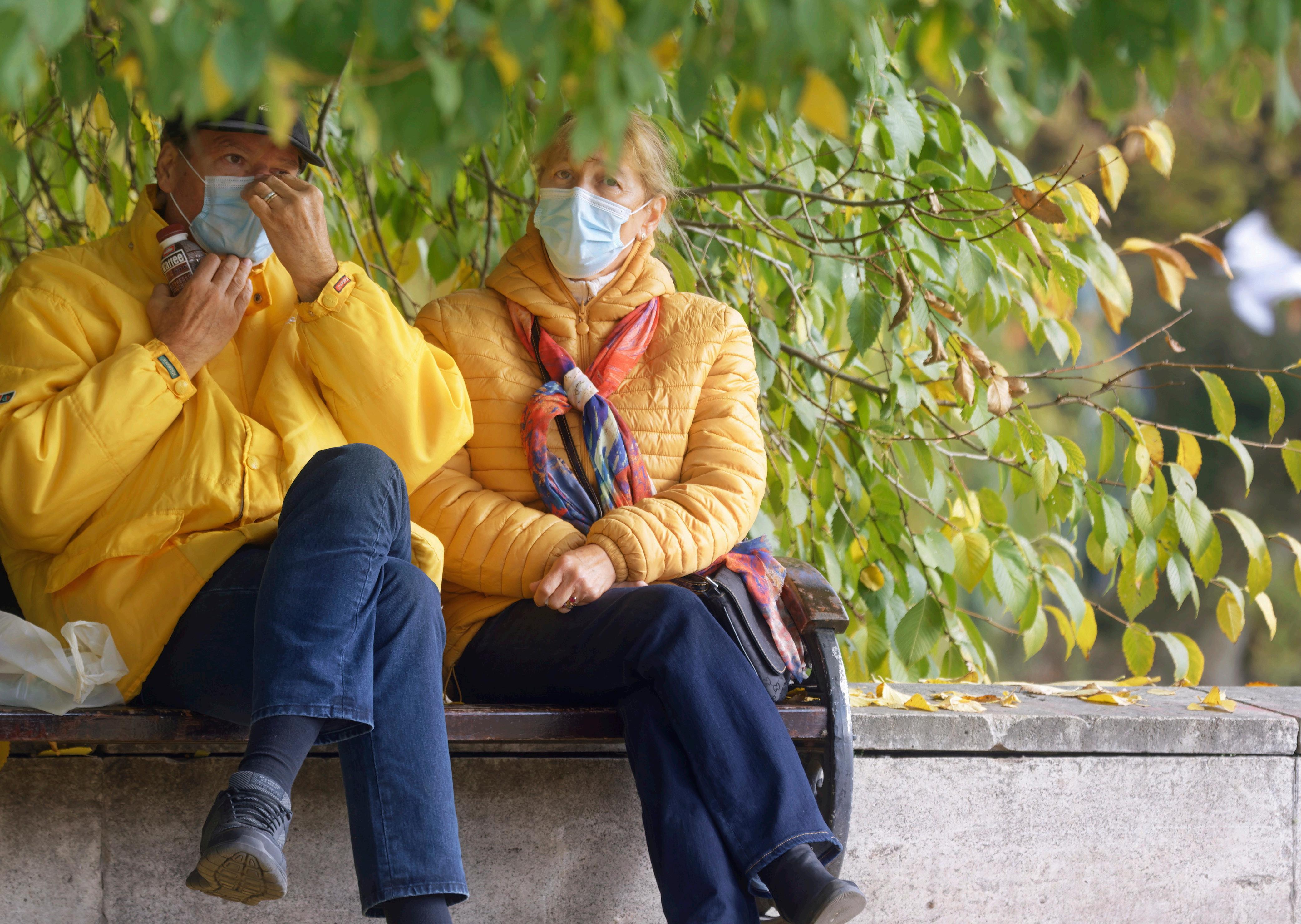
12 minute read
Take The Mask Off, Let Science Breathe Easy
Symbolism
plays a major role in human perception. During the current pandemic, face masks became the symbolic shield in the battle against the novel coronavirus, while waiting for the more sophisticated artillery, the vaccine.

While scientists, slowly, unglamorously, and painstakingly reviewed the evidence, politics and propaganda hijacked the issue. Market forces, too, butted in with designer masks. Mask use or non-use became an issue for shaming, blaming, and stigmatising people. Soon to follow were mask mandates and fines.

Science was simply confined to the backstage. Mass mask use propaganda influenced people in almost every walk of life, making them substitute evidence with emotion. To date, there is no robust scientific evidence that clearly shows masks stop the transmission of respiratory viruses.
Wherever and whenever trends of Covid-19 cases and deaths went down after mask mandates, they did so due to natural phenomenon, and not due to any mandates.

The natural course of respiratory outbreaks has three phases: rise, peak, and fall. In the first phase, due to the high numbers of susceptible people in the population, cases rise rapidly till very few are left uninfected, when the peak is reached, after which there is the fall. Mask mandates are enforced most strongly during the peak. The subsequent fall in cases, which is a natural phenomenon, is often wrongly attributed to the mask mandate.
Observational studies, which are often quoted in support of mask mandates, have this limitation. Besides, without randomly allocated control and intervention groups, observational studies have other limitations, which can give spurious associations.
For example, the affluent may wear masks more often compared to the less privileged. The former will also have better housing, better access to hand-washing, and less crowded workplaces. All these will make them less likely to catch respiratory infections compared to the less privileged, and this observation will wrongly attribute the low transmission to the wearing of masks.
Controlled Trials
The best evidence comes from randomised controlled trials in which both the controls (unmasked group) and the experimental group (those who wear masks) are randomly allocated and followed forward in time. There have been two such studies during the course of the pandemic.
The first one was a Danish mask study. The results did not establish that masks were effective in reducing transmission. As the findings went
College, Malaysia
against the ‘consensus’, the authors had a difficult time to find a journal that would publish their study. It was ultimately published in a journal with a caveat – the authors had to conclude that the findings were inconclusive instead of negative.
Another large-scale randomised community trial, carried out in Bangladesh, failed to establish any advantage of cloth masks in preventing transmission of the virus and showed only a very modest benefit of surgical masks. However, the study came under serious criticism with allegations of concealing important data by the investigators and underreporting any adverse effects of masks.
The last resort in resolving medical uncertainties is the Cochrane Library. It is a collection of databases containing high-quality, independent evidence aimed at helping with informed healthcare decision-making. The latest systematic review and meta-analysis, that is, the pooling the results of high-quality studies to generate the best available evidence by the Cochrane Library, concluded that the pooled results of randomised controlled trials (the gold standard in evidencebased medicine), did not show a clear reduction in respiratory viral infection with the use of medical or surgical masks. There was also no advantage with N95 or P2 respirators in routine healthcare. The balance of evidence suggests that masks do not help. But the more important question is whether they can cause harm. The research on the potential harms of face masks is emerging.
A detailed systematic review with meta-analysis raises many concerns. This paper published earlier this month brings out ample evidence of multiple harms in prolonged use of face masks, with worse outcomes for N95 masks.
The physiological and metabolic changes as a consequence of face masks can have long-term clinical consequences, especially for vulnerable groups such as children, pregnant women, the elderly, and ill people. Besides progressive lack of oxygen and build-up of CO2, there can be other changes, such as oxidative stress, constriction of blood vessels, inflammatory response, suppression of immunity, and changes at the organ, cellular, and microbiome levels and precipitation of MIES (mask-induced exhaustion syndrome).
The authors of the paper also suggest that MIES symptoms might have been misinterpreted as long-Covid symptoms.
Mucormycosis Cases
In the Indian context, there are more serious concerns associated with the use of face masks. A study at AIIMS (All India Institute of Medical Sciences) New Delhi reported high levels of fungal contamination in face masks. During the second wave in India, which occurred in the summer of 2021, a sharp increase in Covid-associated mucormycosis, or black fungus, challenged India’s healthcare system.
By the end of June 2021, India reported over 40,000 cases of mucormycosis. While mucormycosis was attributed to misuse of steroids and pre-existing diabetes, we cannot rule out the role of soiled face masks contributing to the growth of fungus and other pathogens.
Indian summers are hot and humid, and a face mask can get soiled within a couple of hours. This can provide ideal conditions for growth of fungus. The concern regarding the role of face masks in mucormycosis has also been raised by a paper in the Journal of Global Infectious Diseases.

Against the above background, of weakening evidence of benefits of face masks and increasing concerns of serious adverse effects including black fungus that maimed and killed many during the second wave of Covid-19, we can conclude that the recommendation of masks should be reconsidered. More so, when there is evidence that the Omicron variant of the virus and its sub-lineages are able to spread more swiftly, overcoming all physical and distancing barriers.
Mask use by the general public, particularly in the summer months, is hazardous and should be discouraged. The issue should be addressed in a strictly scientific manner without any political influence, and from a humanitarian and ethical point of view. The balance of evidence points to more potential harms than benefits.

Science, which has been suppressed for so long during the pandemic, should be revived, failing which, more people may die.
(Dr. Amitav Banerjee was a field epidemiologist for over two decades in the Indian Army. He led the mobile epidemic investigation team at the Armed Forces Medical College in Pune, India, from 20002004. During this period, he investigated a number of outbreaks in the country. He is presently a professor in a medical college in Pune.)
Musk. He’s the CEO of Twitter and SpaceX, both California-headquartered companies.
Visa, PayPal, eBay dominate the global digital transactions market. Chevron Corporation is a major player in the global oil and gas business and, therefore, a key stakeholder in the US-run petrodollar system. Gap, Levi’s, and Forever 21 are textile and fashion brands that are literally worshipped by urban populations across continents. Wikipedia is the most visited online encyclopaedia for everything under the sun.
OpenAI, the maker of ChatGPT, is the poster boy of the Artificial Intelligence revolution. Uber is a widely trusted cab-hailing app. Fast food chain Taco Bell makes a huge amount of money in shopping malls around the world. And then, of course, there are several other IT industry stalwarts that make California Inc. a major global force, such as Qualcomm, Cisco, Logitech, McAfee, Seagate, and Nvidia.
Returning to the topic of what makes mainstream narratives decidedly stay miles away from telling the world how California Inc. dictates our lives, one can only speculate why it is so.
Perhaps the western corporate world, which usually scripts the narratives of the world order through its clout over the popular press, wants us to continue believing in the ages-old notion that only governments run societies – and that businesses are around only to give us goods, services, and materialistic pleasure. It’s well known that influential corporations and industries influence popular narratives in the media.
However, there’s a paradox here. Corporate
Spotlight On Jaipur
Such water deficit scenarios are not limited to Chennai and New Delhi. Cities and towns across the country suffer from acute water shortages due to lack of focus on tackling expanding populations and increasing urbanisation.
In a 2018 research paper carried by the online journal Nature Sustainability, scientist Robert Mcdonald and his colleagues projected that by 2050, Jaipur in Rajasthan would become the second most surface-water deficit city in the world after Los Angeles. Chennai is estimated to take the 20th spot.
Two years later, the WWF (World Wide Fund for Nature) identified around 30 Indian cities, including Jaipur, Indore, Amritsar, Pune, Srinagar, Kolkata, Bengaluru, Mumbai, Kozhikode, and Visakhapatnam, which would face increasing water supply risks over the next few decades.
It is high time the authorities initiate emergency measures. Time is running out. Research undertaken by the Centre for Science and Environment has shown that groundwater forms the source of 48% of India’s urban water supply, and in seven of the nation’s 10 most populous cities, groundwater levels have gone down significantly over the past two decades.
A paucity of water supply networks also poses a problem for India’s urban dwellers. While over 34% of the country’s population lives in the cities, 31% of urban households, mostly colonies and slums not recognised by government authorities, lack access to piped water or public tap water.
California’s phenomenal rise to power in recent decades reminds us of the dark days of the British East India Company, which invaded and ruled the Indian subcontinent before it was replaced by the equally regressive British monarchy as a coloniser.
The idea here is not to demean the Californiaheadquartered businesses. This isn’t a rant against corporate success. Rather, the idea here is to compare two different points on civilisation’s long timescale – now (the time of California Inc.) and then (the time of the British East India Company).
CALIFORNIAN EMPIRE VS. EAST INDIA COMPANY
For Silicon Valley fans, Big Tech’s obsessive customers, and Hollywood movie buffs, it is worth looking back at what happened between 1600 and 1874.
In 1608, eight years after the British East India Company was born, it was welcomed by the bewildered population of Surat in Gujarat. Surat’s unsuspecting coastal people didn’t realise at that time that the seemingly naïve trading company from Europe would someday tower above them as an octopus-like monopoly, sucking the entire Indian subcontinent dry of its resources.
And from this same East India Company story, there’s an important lesson for today’s Corporate California as well. As the saying goes, all good things don’t last for good, the East India Company was eventually bulldozed by the British monarchy in 1858 and made to wind up in 1874.
The Californian Empire and its fanatical citizens (read: customers) will find out in the time to come if history will repeat itself.
The majority of Indian cities, thus, cannot meet the per capita water supply limit set by the Central Public Health and Environmental Engineering Organisation, which is 135 litres per day.
UN’s DOOMSDAY FORECAST
In a recent and more damning report, the United Nations has made a dark prediction about India’s worsening water crisis. According to the UN, India will become the world’s worst-affected country in terms of water scarcity by around 2050. “The United Nations World Water Development Report 2023: Partnerships and Cooperation for water” was published last month on the eve of a major UN summit in New York on water scarcity and water crisis.
The report said between 2.2 and 3.2 billion people lived under water stress for at least one month in 2010, corresponding to 32% and 46% of the world’s population at the time. Around 80% of people living in water stress lived in Asia – in particular, in northeast China, India, and Pakistan.
The global urban population facing water scarcity is projected to increase from 933 million (one-third of the global urban population) in 2016 to 1.7-2.4 billion people (one-third to nearly half of the global urban population) in 2050, with India projected to be the most severely affected.
According to Richard Connor, the report’s lead author, the impact of the “world water crisis” will be a “matter of scenarios”.
“If nothing is done, it will be a business-as-usual scenario – it will keep on being between 40% and 50% of the population of the world that does not have access to sanitation and roughly 20-25%
(from page 04) publication and weekly newspaper Daily Maverick came up with a report alleging that “the UK supported the coup [against Morales] in Bolivia to gain access to its white gold”.
The media outlet accused the British embassy in the city of La Paz of bringing a cybersecurity company with close links to the CIA (US Central Intelligence Agency) to Bolivia eight months before the military takeover and providing data for an international report that was used to justify the coup.
It also claimed that Britain’s foreign office appeared to have paid an Oxford-based company to optimise the “exploitation” of Bolivia’s lithium deposits the month after Morales fled the country, while the UK embassy acted as a “strategic partner” to the coup regime and organised an international mining event.
Foreign Collaborations
The Indian government has already announced it would invite bids for the auction of the lithium reserves in J&K early in the June-September quarter as part of its move to reach the next two stages – G2 (general exploration) and G1 (detailed exploration) – before carrying out a feasibility study in exploiting the lithium resources.
Meanwhile, India had rolled out the red carpet for foreign collaborations in lithium mining much before the J&K discovery. The Khanij Bidesh India Ltd (KABIL), a joint venture of three CPSEs under the ministry of mines, signed a non-binding MoU with three state-owned organisations from Argentina for sharing information about prospective mineral acreages of lithium.
of the world will not have access to safe water supply,” Connor wrote in the report. With the global population increasing every day, “in absolute numbers, there’ll be more and more people that don’t have access to these services,” he wrote.
REAL REASON: CORPORATE TAKEOVER OF WATER?
India’s fast-escalating water supply crisis comes as a paradox in a resource-rich country whose large swathes soak in abundant quantities of rain during the monsoons. For India to be labelled the most water-scarce country in the coming years reminds us of Samuel Taylor Coleridge’s epic line from his poem, The Rime of the Ancient Mariner: Water, water everywhere, nor any drop to drink.
In a world where empires and their administrations are obsessed with agendadriven issues such as coronavirus vaccines and climate change, a chilling piece of stat throws the searchlight on how lopsided our priorities are. Diarrhoea, a silent killer that doesn’t make it to primetime headlines, claims about 2,200 young lives every day — much more than AIDS, malaria, and measles combined — and it is generally caused by a lack of access to clean water and sanitation services.
It is amply clear that water scarcity is not being prioritised above flashier and more spectacular issues plaguing the human race. What could be the reason behind it? Is it because fixing water woes would throw a spanner in the wheels
A G2G MoU has also been inked between the central government and its Australian counterpart for cooperation in the field of mining and processing of “critical and strategic minerals” such as lithium.
According to the coal ministry, KABIL has signed a detailed MoU with CMFO (Critical Minerals Facilitation Office), DISER (Department of Industry, Science and Resources, Australia for identifying lithium and cobalt assets for joint investment decisions.
Some years back, Andrew Barron, a professor of low carbon energy and the environment at Swansea University, UK, had visualised two extreme scenarios in the context of lithium exploitation. According to Barron, “The lithiumproducing countries could band together to form their own version of OPEC, perhaps deciding to control the prices of the metal by rationing supply. Alternatively, we could see wars being fought over lithium resources and supply lines, as they’ve been fought over oil for decades.” of profit-focused corporatisation of modern civilisation?
While the present global situation does not reflect Barron’s premises yet, the world is already witnessing a scramble between runaway leader China and distant challenger US and its allies over the sourcing of lithium and controlling the metal’s exploitation in the backdrop of the EV revolution.
India could become a major player if the initial estimates of the J&K reserves hold true in the long run. It will then be interesting to see if India is drawn, willingly or unwillingly, into the race, or if it manages to chart out an independent path to reach its climate goals of mission 2030, 2047, and 2070.
Is it something far more sinister than the mere mismanagement of water supply? It is well-known that growing water supply problems consistently dovetail rapid and expanding urbanisation. Do empires that are corralling an increasing number of people into templatised, monoculture cities are plotting to someday cash in on this deepening water scarcity and eventually commodify the essential compound?
Modern history has shown that resource-based business models are always preceded by a scarcity of those resources. The commodification of seeds, urban land, minerals, and underground fossil fuels came right when these vital resources were ‘seen’ as becoming increasingly scarce. Much in the same way, will the intensifying water scarcity in India be followed by an industry-level ‘productification’ of natural water?
Well, it’s not that hard to speculate, is it? We already have a glaring example to learn from. We have foreign companies pumping out water from underneath Indian soil, selling it back to Indians as glorified bottled water, and then walking away with the profits!
Is the urban water crisis a sign that the ubiquitous natural resource, which is as of now packaged as a profit-making product only in bits and pieces, could someday become completely commodified?






